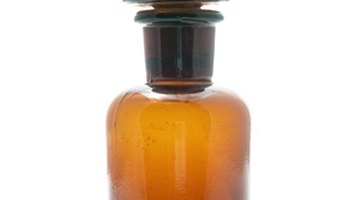The History of Apothecary Jars
The humble tools of the apothecary have evolved considerably since the days of the mortar and pestle and glass jars. Now seen as a stylish accessory or valuable antique, we rarely see them behind the counter at the pharmacy anymore.
History


The apothecary of the ancient world was a purveyor of spices, wine and other luxury items. It was not until the 16th century that the apothecary began to resemble a modern pharmacist. The opaque or translucent glass jars that lined these 16th century apothecaries had already been in use by people across the globe for centuries.
Types

There could be as many as three main types of storage that the vintage apothecary jar was used for in a single shop: to store medication in the form of pills, creams or elixirs: to store herbs and other basic ingredients needed for making medication; or for botany. Shapes and sizes varied, but most authentic antique apothecary jars are made of glass and still retain the original label.
Function

The modern apothecary jar with its handwritten label is now obsolete for commercial use, having been replaced by its more durable plastic counterpart and computer filing systems. They can still be found in many stylish homes as receptacles for soaps, herbs, plants. or even purely decorative objects like marbles or flowers.
References
Resources
Writer Bio
Kristy Ambrose enjoys writing about teaching, travel and pet care. She holds a Bachelor of Arts in English literature from the University of Victoria.
Photo Credits
- ANTICA BOCCETTA DA FARMACIA image by Little sisters from Fotolia.com
- four wine glasses with white wine image by Arkady Ten from Fotolia.com
- vase of stones image by Liz from Fotolia.com
- pill bottle image by msw from Fotolia.com
More Articles



